Ancient people made circular arrangements of enormous stones at Stonehenge as early as around 5,000 years ago in the southern part of modern England (Salisbury Plain). They aligned the monolithic blocks to highlight the sunset of the winter solstice and the sunrise of the summer solstice. Some of the largest stone blocks are up to 30 feet (9 m) long and weigh around 30 tons. Compared with other ancient megalithic monuments in Europe, Stonehenge is unique for the great distances that the builders moved blocks. Locating the quarries where the rocks originated has been a focus of researchers for several centuries, and interesting new findings have surfaced recently.
In Part 1 of this series of blog posts, I describe some quarries and achievements of the ancient Egyptians, who are renowned for their use of monoliths and megaliths (in simple terms: very large rocks). The technologies used by both the Egyptians and the builders of Stonehenge were similar; the differences in the monuments they produced reflect the different scales of social organization. (Here is the link to the previous post: Monoliths, Megaliths, and Ancient Quarries—Part 1.)
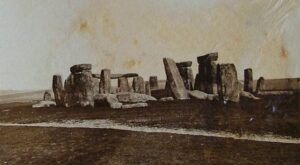
Stonehenge in a photo taken in 1877 (Wikipedia)
Stonehenge Sarsens and Bluestones
Stonehenge was built and rebuilt in at least five stages over approximately 1500 years, beginning sometime around 3000 BCE. Archaeologists have found that the ancient people erected the concentric rings of stones primarily between about 2620 to 2480 BCE.
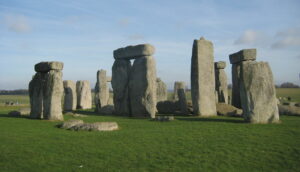
Stonehenge in 2008 and from a similar angle to 1877 photo showing extent of reconstruction (Wikipedia)
The impressive outer ring at Stonehenge is of sandstone slabs, known as sarsen, that are hard and dense because of silica cementation (silcrete). Some 80 blocks of sarsen were originally erected, but only 52 remain at the site today. Rock debris found on the north side of the monument indicates laborers shaped the enormous slabs after they transported them to the site from quarries. Many of the large vertical stones, or posts, support a third stone, the lintel, set horizontally across the top. In megalithic monuments, these structures are known as trilithons, and the most famous are the ones of Stonehenge. The upright sarsens are each around 20 feet (6 m) high and each lintel is around 10 feet (3.2 m) long. Archaeologists have re-erected only a few of the trilithons.
The rock that was selected for the sarsens formed over several tens of millions of years when groundwater flow brought excess silica into sandstone bedrock and cementation formed isolated, patchy lenses of an especially hard rock. Recent analysis of the chemical variability of the sarsens shows that 50 of the 52 at the site share a consistent chemistry and likely originated from a common source area. Researchers have traced this rock to quarry deposits about 15 miles (25 km) to the north, near West Woods, Wiltshire.
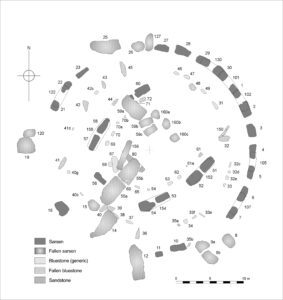
Plan of the central stone structure at Stonehenge today; stone numbers are those conventionally used in recent literature (Wikipedia)
Inside the sarsen ring is a ring of smaller bluestones, informally named after the bluish-gray hue the rock has when freshly broken or wet. These blocks are composed of at least 13 different types of rocks, including intrusive igneous rocks of diabase (dolerite in the UK) and volcanic tuff and rhyolite, plus sandstone. Each of the bluestones weigh from about 2 to 4 tons.
Archaeologists have traced many of the bluestones to sources in the Preseli Hills in west Wales — a distance of about 140 mi (225 km). Craggy rock outcrops at several sites in these hills provided the principal source of blocks, as the outcrops contain naturally fractured pillar-shapes that are suitable for use as columns.
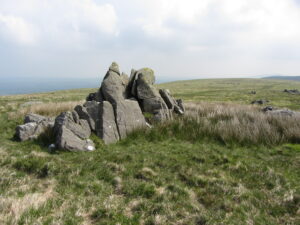
Outcrops of diabase (dolerite) in the Preseli Hills in Wales (Wikimedia)
The bluestones may have been placed originally in a stone circle at a Welsh site in the Preseli Hills known as Waun Mawn, and of identical size to the circle at Stonehenge. Around 300 to 400 years after ancient people erected the Waun Mawn circle, there is evidence that it was dismantled, and the stones transported to Stonehenge.
Moving these multi-ton blocks was clearly a tremendous achievement. How the ancient people accomplished this is unknown, but they may have rolled blocks along a track of logs. Another possibility involves some type of sleigh or sled running on a track greased with mud or animal fat. Archaeologists have proposed alternative routes that the ancient people might have traveled while pulling the blocks. New theories and experimentation will be forthcoming!
The purpose of Stonehenge clearly required bringing specific stones long distances—as a deliberate and symbolic act — and not simply to assemble a monument from the nearest materials. Possibly the places of origin of the stones held considerable importance. The significance of Stonehenge for the societies that built and gathered there, and details about the construction process, are subject to controversy and debate. Speculation will continue, but we will probably never really know.
If you liked this post, please share it and/or leave a comment or question below and I will reply – thanks! And if you’d like to receive a message when I publish a new post, scroll down to the bottom of this page, and leave your email address on my website. Join now to learn more about geology, geography, culture, and history.
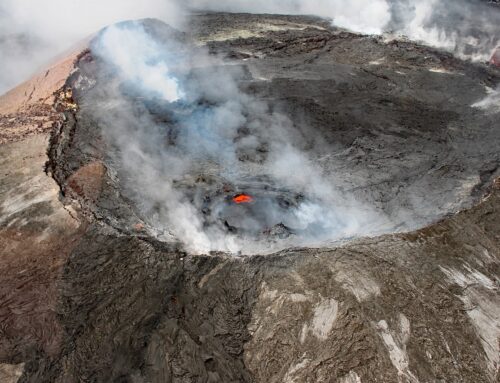


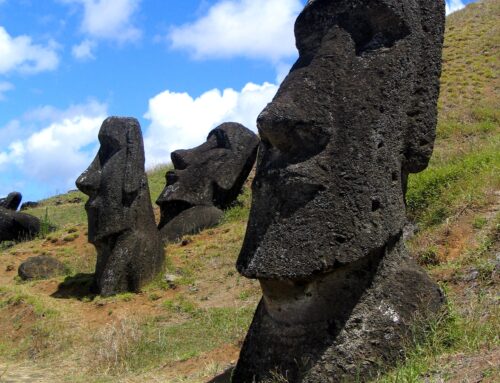


Fascinating and informative! Thanks, Roseanne!
Thank you!
Guadalperal, the Spanish Stonehenge could be some 2000 years older.
https://raicesdeperaleda.com/tourism-peraleda/dolmen-of-guadalperal-the-spanish-stonehenge-63
What I find most interesting is that we find the prehistoric peoples of present day England, France and Spain building similar structures!
Rocks, big and small, have always fascinated humans, perhaps because they symbolize perpetuity.
Thanks, Leo! Very interesting to learn about Guadalperal — especially since it has been inundated by a reservoir for ~60 years, but drought has recently exposed it again! I found a summary on Wikipedia (Dolen of Guadalperal) as well as a few articles via Google Scholar — all fascinating! And yes – the solidity and stability of rocks have probably made them attrative to humans for millennia.